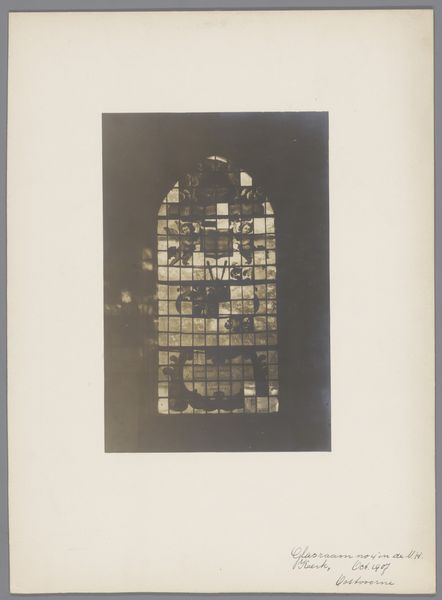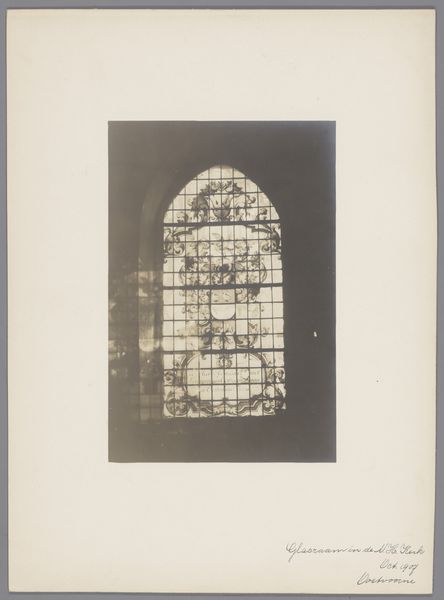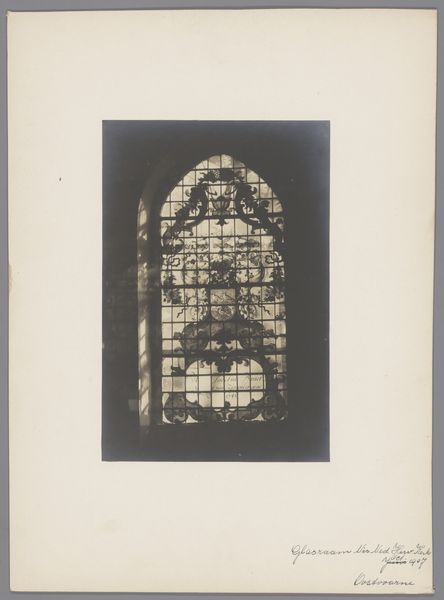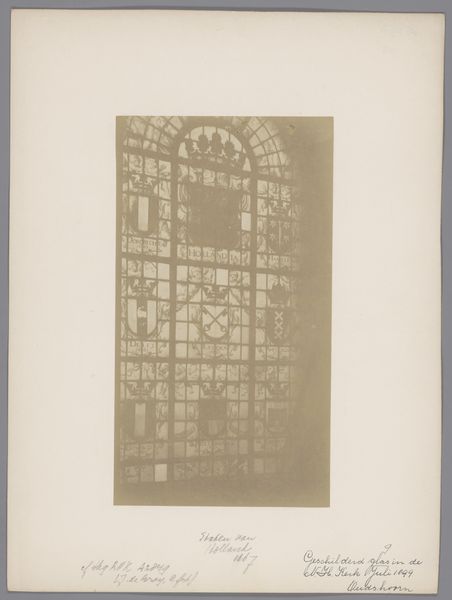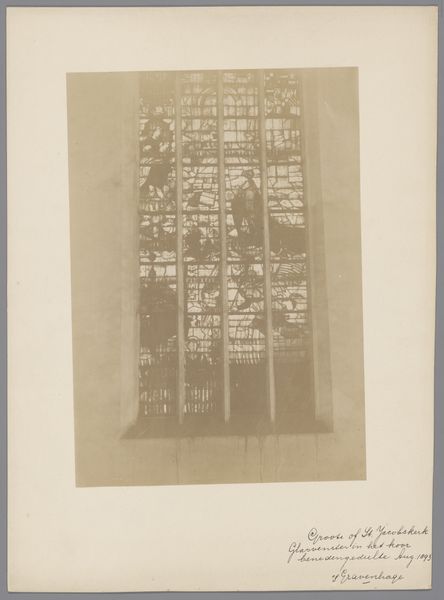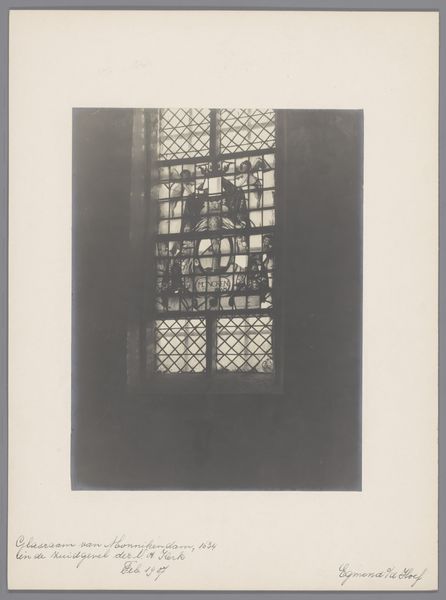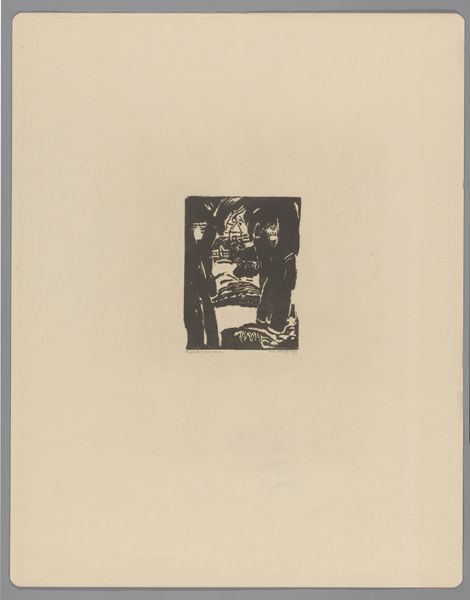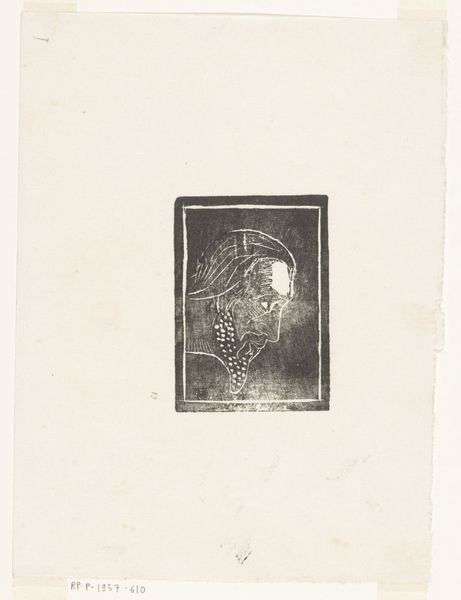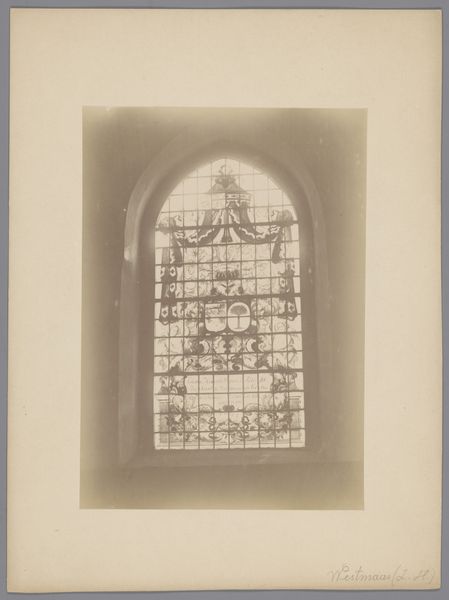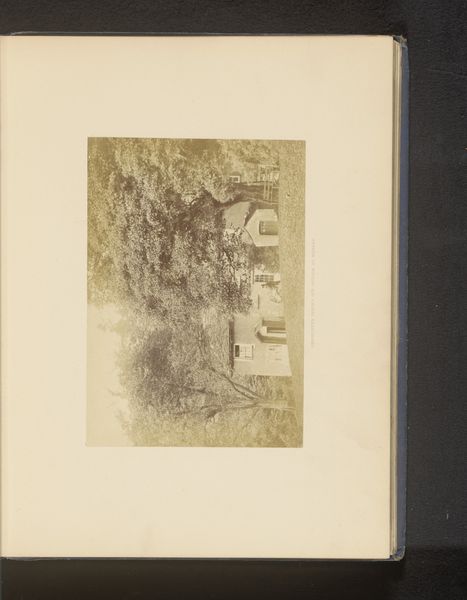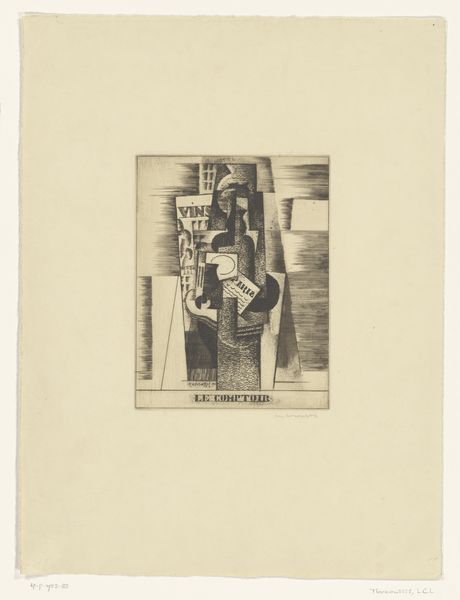
Dimensions: height 194 mm, width 130 mm
Copyright: Rijks Museum: Open Domain
Curator: Here we have an early photographic record, dating from 1907, of the stained-glass window in the village church of Oostvoorne. The inscription identifies it as 'Geschilderd raam in de Dorpskerk te Oostvoorne'--Painted Window in the Village Church of Oostvoorne. What are your first impressions? Editor: The immediate visual impact is the incredibly fine grid work punctuated by elaborate emblems. There’s something haunting in the high contrast that turns the surrounding wall into a sea of shadow. The lead is assertive here and the forms almost float against the dark space. Curator: Indeed, the grid establishes a rigorous structure, but notice how each pane contributes to the overall symbolic narrative. Coats of arms, crowns, foliate forms - they all work together to establish an unmistakable sense of dynastic authority. It's interesting that a technology meant to democratize representation is applied here to visualize a rather hierarchical concept of power. Editor: I agree, the composition exudes a formal sensibility, but my mind goes to the glass makers, the laborers whose craft enabled the commission of this kind of commemorative display. Where were these artisans located? Were they local, using native materials or part of a larger, centralized manufactory shipping glass around the region? The economic context would reveal much, I suspect, about artistic production in the region at the time. Curator: It’s certainly important to think about the conditions that enabled such production. Yet I am more immediately drawn to the window itself as a sign, as a cultural artifact reflecting the power dynamics of its historical context. These emblems speak of lineage, power and identity, reflecting in turn, the societal order and class consciousness prevalent during that era. The style references traditional forms, but subtly asserts the patron’s continued authority. Editor: These questions of lineage and patronage are important; yet, understanding the means of production of such artwork enhances the overall understanding, doesn't it? What specific types of pigments did they use to paint the glass, and where did the raw materials originate? Without such crucial detail, we may never fully appreciate the sheer ingenuity of the craftsman. Curator: Fair point. A fuller understanding surely demands both the parsing of symbols and an appreciation for the skill that rendered them in glass. Editor: It’s amazing to consider how objects like this served as potent social and historical witnesses through the passage of time, each tiny fragment revealing traces of craftsmanship and communal memory.
Comments
No comments
Be the first to comment and join the conversation on the ultimate creative platform.
